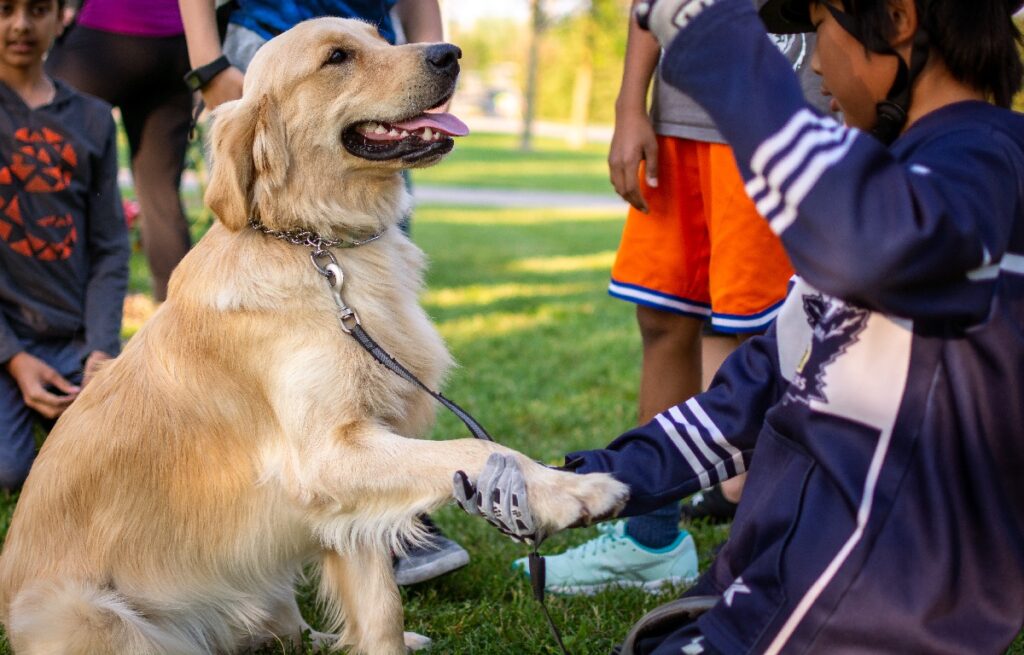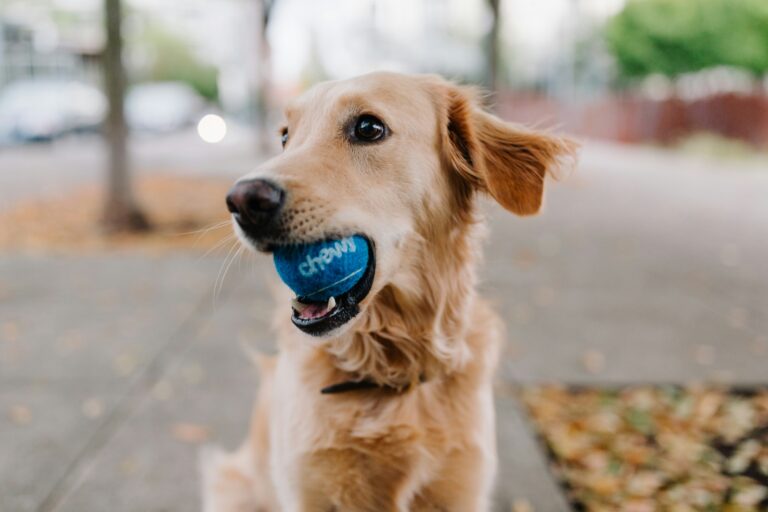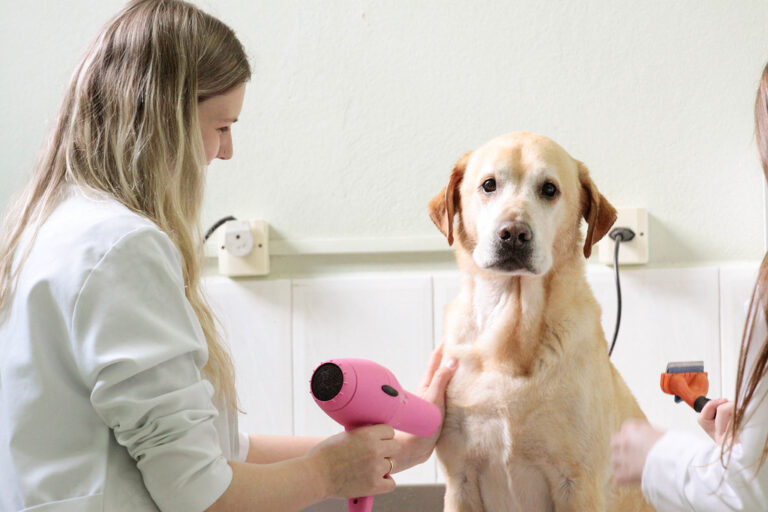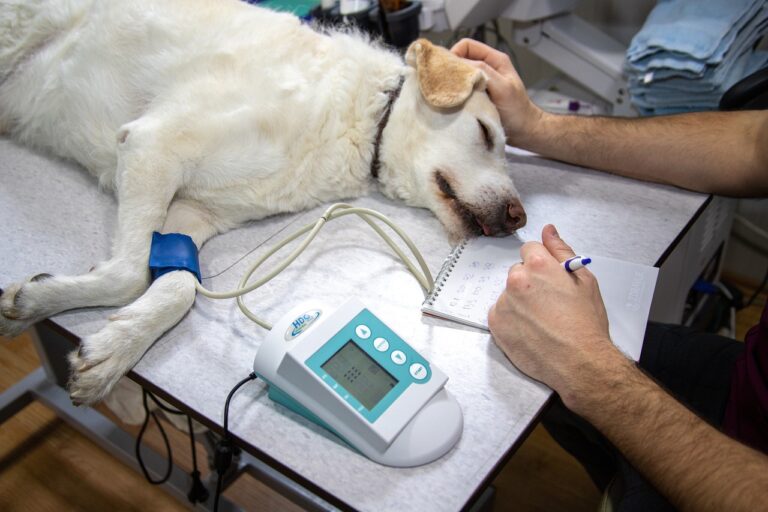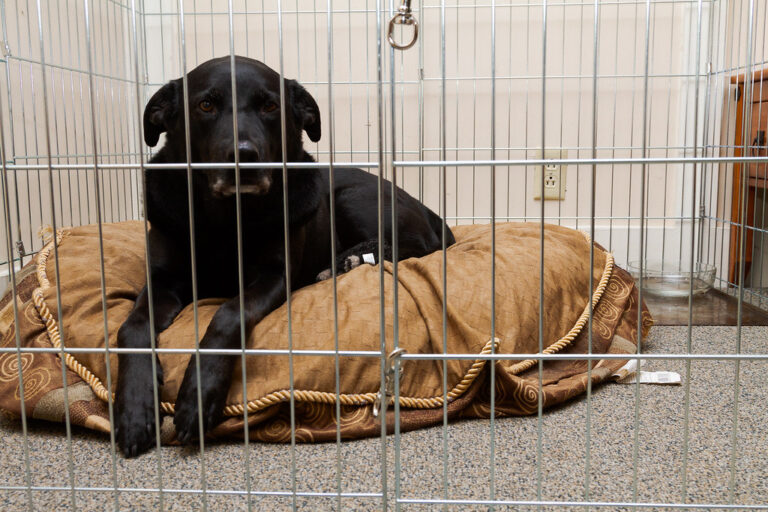Mastering Obedience: Essential Training Tips for Labrador Retrievers
Training Tips for Labrador Retrievers
When it comes to training your Labrador Retriever, there are several key tips to keep in mind to ensure successful results. Labrador Retrievers are intelligent and active dogs that respond well to positive reinforcement techniques. To help you effectively train your Labrador Retriever, consider the following tips:
Importance of Consistency in Training
Consistency is crucial when training Labrador Retrievers. These dogs thrive in a structured environment with clear rules and boundaries. Establishing consistent expectations and routines will help your Labrador Retriever understand what is expected of them and promote successful training outcomes. By consistently reinforcing desired behaviors and redirecting unwanted behaviors, you can effectively shape your Labrador Retriever’s behavior (American Kennel Club).
Positive Reinforcement Techniques
Labrador Retrievers respond exceptionally well to positive reinforcement training methods. Utilize treats, praise, and play as rewards to motivate and encourage your Labrador Retriever during training sessions. Positive reinforcement helps to create a strong bond between you and your dog and makes the learning process enjoyable for both of you. By focusing on rewarding desired behaviors rather than punishing unwanted behaviors, you can effectively shape your Labrador Retriever’s behavior and foster a positive training experience (American Kennel Club).
Starting Training Early
It’s important to start training your Labrador Retriever early. Begin socialization and obedience training from a young age to prevent negative behaviors from becoming ingrained. Early training helps your Labrador Retriever develop good habits and sets the foundation for a well-behaved and obedient dog. The earlier you start training, the better equipped your Labrador Retriever will be to navigate the world around them.
Providing Mental and Physical Stimulation
Labrador Retrievers are active and intelligent dogs that require both mental and physical stimulation. Engage your Labrador Retriever in regular exercise and interactive play to keep them mentally and physically stimulated. Activities such as walks, fetch, puzzles, and training sessions can help channel their energy in a positive direction and prevent behavioral issues that may arise from boredom or lack of stimulation. Providing ample opportunities for exercise and mental engagement will contribute to a well-behaved and content Labrador Retriever (American Kennel Club).
Establishing Clear Rules and Boundaries
Labrador Retrievers thrive in a structured environment with clear rules and boundaries. Set consistent expectations for your Labrador Retriever and ensure everyone in the household follows the same guidelines. Clearly communicate what behaviors are acceptable and what behaviors are not. By establishing clear rules and boundaries, your Labrador Retriever will understand their place in the family and what is expected of them, leading to a well-behaved and obedient companion (American Kennel Club).
By applying these training tips, you can effectively train your Labrador Retriever and foster a strong bond built on trust and cooperation. Remember to be patient, consistent, and positive throughout the training process. With proper training and guidance, your Labrador Retriever will become a well-behaved and cherished member of your family.
House Training Labrador Retrievers
House training is an essential part of raising a Labrador Retriever puppy. By starting the housebreaking process early and implementing a consistent routine, you can effectively teach your puppy where to go potty. Here are some key tips for successfully house training your Labrador Retriever:
Starting Housebreaking Early
It is recommended to start housebreaking your Labrador puppy as soon as you bring them home from the breeder. This helps establish the right and wrong place for them to go potty, avoiding confusion later on when trying to change the rules. By starting early, you can set a solid foundation for successful house training.
Establishing a Routine
Establishing a routine is crucial to house training Labrador puppies. Consistency is key in helping them learn where and when it is appropriate to go to the bathroom. Set a timer to remind you for potty breaks and take your puppy outside after waking up, after eating, and after playing. This routine will help them understand the desired behavior and reinforce good habits (Otter Tail Kennels).
Crate Training for Housebreaking
Crate training can be an effective method for house training Labrador puppies. The crate utilizes the dog’s natural instincts to keep its den clean, promoting control of their bladder and bowels. Start with a small crate that allows minimal movement and gradually increase the size as the puppy grows. This helps prevent accidents inside the crate and encourages them to hold their bladder until taken outside (The Labrador Site).
Supervision and Positive Reinforcement
Supervision is crucial during the house training process. Keeping a close eye on your Labrador puppy helps them learn where it is appropriate to go to the bathroom. Consider using a leash inside or baby gates to limit access to areas where accidents can occur. Additionally, positive reinforcement plays a vital role in house training. Rewarding good behavior with treats, praise, or playtime helps reinforce the desired behavior of going to the bathroom outside.
Consistency in House Training
Consistency is key in successfully house training Labrador puppies. Maintaining a consistent schedule, using the same cues, and providing positive reinforcement will help reinforce the desired behavior and prevent confusion. Labrador puppies thrive on routine and clear expectations, so be patient and consistent throughout the house training process. With time and consistency, your Labrador Retriever will learn where to go potty and become fully house trained.
By starting housebreaking early, establishing a routine, utilizing crate training, providing supervision, and maintaining consistency, you can effectively house train your Labrador Retriever puppy. Remember to use positive reinforcement and be patient throughout the process. With proper training and guidance, your Labrador Retriever will become a well-behaved and house-trained companion.
Leash Training Labrador Retrievers
Leash training is an essential aspect of training Labrador Retrievers and teaching them good leash manners. By starting leash training early with Labrador Retriever puppies, you can help them develop the skills needed to walk on a leash in a controlled and calm manner (American Kennel Club).
Starting Leash Training Early
It is recommended to begin leash training with your Labrador Retriever as early as possible. As young puppies are more receptive to learning, introducing them to the leash and collar at an early age helps familiarize them with these new sensations. Start by allowing them to wear the collar and leash indoors before progressing to outdoor training sessions. This gradual approach will help them associate the leash with positive experiences.
Using Positive Reinforcement
Labrador Retrievers respond well to positive reinforcement techniques, such as using treats, praise, and rewards. When your Labrador Retriever walks calmly by your side or follows your cues, reward them with verbal praise and small treats. This positive reinforcement helps reinforce desired behaviors and encourages your dog to continue behaving appropriately on the leash (The Labrador Site).
Keeping Training Sessions Short and Engaging
Labrador Retrievers are intelligent and energetic dogs, so it’s important to keep leash training sessions short, fun, and engaging. These sessions should be viewed as a positive bonding experience rather than a chore. Aim for multiple short training sessions throughout the day, focusing on specific skills such as loose leash walking and responding to verbal cues. By keeping the sessions interesting and rewarding, your Labrador Retriever will remain attentive and motivated to learn (The Labrador Site).
Providing Mental and Physical Stimulation
Labrador Retrievers are known for their high energy levels and need for both mental and physical stimulation. Before starting leash training, ensure your Labrador Retriever has received adequate exercise to help release excess energy. Mental stimulation, such as puzzle toys or obedience training, can also help keep them engaged and focused during leash training sessions. By addressing their exercise and mental stimulation needs, you can set the stage for successful leash training sessions.
Consistency in Leash Training
Consistency is key when training Labrador Retrievers to walk on a leash. Establishing clear rules and expectations will help your dog understand what is expected of them during walks. Use the same cues and commands consistently, such as “heel” or “let’s go,” and reward your Labrador Retriever for appropriate behavior. Creating a routine for leash training sessions and consistently reinforcing positive behaviors will reinforce good leash manners and help your Labrador Retriever become a well-behaved walking companion.
By starting leash training early, using positive reinforcement techniques, keeping training sessions short and engaging, providing mental and physical stimulation, and maintaining consistency, you can effectively leash train your Labrador Retriever. Remember to be patient and understanding throughout the process, as it takes time for dogs to develop good leash manners. With consistent training and positive reinforcement, you and your Labrador Retriever will enjoy pleasant and enjoyable walks together.
Obedience Training for Labrador Retrievers
When it comes to training your Labrador Retriever, obedience training is an essential component. Establishing a strong foundation of obedience helps ensure that your Labrador is well-behaved and responsive to commands. In this section, we will explore the foundations of obedience training, the importance of early training, and effective training techniques for Labs.
Foundations of Obedience Training
The foundations of obedience training for Labrador Retrievers involve teaching them basic commands and behaviors. These commands include sit, stay, down, come, and heel. By mastering these commands, your Labrador will become a well-mannered and obedient companion.
To effectively train your Labrador, it’s important to use positive reinforcement techniques. This involves rewarding your dog with treats, praise, or playtime whenever they exhibit the desired behavior. Positive reinforcement creates a positive association with training and encourages your Labrador to repeat the behavior in the future.
Socialization and Name Recognition
Socialization is a critical aspect of obedience training for Labrador Retrievers. It involves exposing your dog to a variety of people, animals, and environments to help them become comfortable and well-adjusted. By socializing your Labrador from an early age, you can prevent behavioral issues and promote good manners.
Name recognition is another important component of obedience training. Teach your Labrador to respond to their name by using it consistently during training sessions and everyday interactions. This helps establish a strong communication bond between you and your dog and aids in effective training.
Importance of Early Training
Early obedience training is crucial for Labrador Retrievers. It helps establish boundaries and teaches them appropriate behaviors from a young age. Training should start within the first couple of weeks of bringing your Labrador puppy home. According to Otter Tail Kennels, early training helps Labrador puppies grow, learn, and adjust with a positive attitude.
Training Techniques for Labs
Labrador Retrievers are intelligent and eager to please, making them relatively easy to train. However, it’s important to keep training sessions engaging and enjoyable for your Lab. Here are some effective training techniques for Labs:
-
Short and frequent sessions: Labs, especially puppies, have a shorter attention span. Keep training sessions short (around 5 to 10 minutes) to prevent boredom and maintain their focus.
-
Use positive reinforcement: Reward your Labrador with treats, praise, or playtime whenever they follow commands correctly. Positive reinforcement encourages them to repeat the desired behavior.
-
Effective use of voice cues: Use clear and consistent voice cues to communicate commands to your Labrador. Use a firm tone for commands like “sit” or “stay” and a cheerful tone for positive reinforcement.
-
Building a strong training foundation: Start with basic commands and gradually increase the difficulty level as your Labrador progresses. Focus on one command at a time and ensure your Labrador has mastered it before moving on to the next.
Maintaining Consistency and Patience
Consistency is key when it comes to obedience training for Labrador Retrievers. Use the same commands and cues consistently to avoid confusion. Stick to a regular training schedule and practice commands in various environments to generalize the training.
Patience is equally important during the training process. Labrador Retrievers thrive on positive reinforcement and respond best to patient and understanding training methods. Remember that training takes time, so be patient and persistent.
By laying the foundations of obedience training, socializing your Labrador, starting early, using positive reinforcement, and maintaining consistency and patience, you can achieve a well-trained and well-behaved Labrador Retriever. Enjoy the training process and build a strong bond with your loyal and intelligent companion.
Training a Young Labrador Retriever
When it comes to training a young Labrador Retriever, laying the right foundations is key to fostering a well-behaved and obedient companion. In this section, we will explore the essential aspects of training a young Labrador Retriever, including puppy training foundations, heelwork training, short and positive training sessions, effective use of voice cues, and building a strong training foundation.
Puppy Training Foundations
Puppy training should ideally start when your Labrador Retriever is around 9-10 months old. During this stage, it’s important to focus on establishing fundamental behaviors and commands. Some key areas to address include:
- Toilet training: Teach your puppy where to eliminate and establish a consistent routine.
- Name recognition: Train your puppy to respond to their name, which lays the groundwork for effective communication.
- Coming when called: Teach your puppy to come to you when called, helping to ensure their safety and control in various situations.
- Walking to heel: Begin introducing your puppy to leash walking and teach them to walk calmly by your side.
By focusing on these foundational behaviors, you are setting the stage for a well-rounded and obedient Labrador Retriever.
Heelwork Training
Heelwork training is an essential skill for Labrador Retrievers, particularly when walking on a leash. Start by introducing your puppy to walking on a lead in a restricted, distraction-free area such as a patio or yard. Begin with simple exercises like walking in straight lines and gradually progress to more complex maneuvers such as figure eights, pace variations, and occasional tight turns.
It’s crucial to use positive reinforcement techniques, such as treats and praise, to reward your puppy for walking calmly by your side. Consistency and patience are key during heelwork training, as it may take time for your puppy to understand and master this skill.
Short and Positive Training Sessions
Young Labrador Retrievers have relatively short attention spans, so it’s important to keep your training sessions brief and engaging. Aim for sessions that last around 5-10 minutes, focusing on one specific behavior or command at a time. By keeping the sessions short, you can maintain your puppy’s focus and prevent them from becoming overwhelmed or bored.
During training, maintain a positive and encouraging tone when praising your puppy for correct behaviors. Use a firm and assertive tone when correcting inappropriate behaviors. It’s important to end each training session on a positive note to reinforce learning and maintain motivation.
Effective Use of Voice Cues
The effective use of voice cues is an integral part of training a young Labrador Retriever. Use a light and encouraging tone when praising your puppy, letting them know they are doing well. Conversely, use a low and firm tone when correcting inappropriate behaviors. Shouting is unnecessary, as dogs have acute hearing abilities and can respond to subtle changes in tone.
Additionally, it’s important to train your Labrador Retriever when you are in a positive and calm state of mind. Dogs are sensitive to their trainer’s emotional state, so maintaining a patient and composed demeanor will contribute to a more effective training experience.
Building a Strong Training Foundation
Training a young Labrador Retriever is akin to building a house – it requires a solid foundation. By focusing on puppy training foundations, practicing heelwork training, conducting short and positive training sessions, and effectively using voice cues, you are establishing a strong groundwork for further training and obedience.
Remember, each Labrador Retriever is unique, and training methods may need to be adjusted according to their temperament and personality. Patience, consistency, and positive reinforcement are essential for successful training outcomes. With dedication and the right training approach, you can guide your young Labrador Retriever towards becoming a well-mannered and obedient companion.
